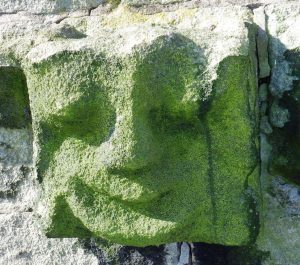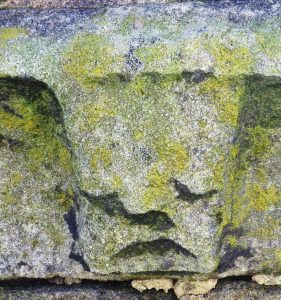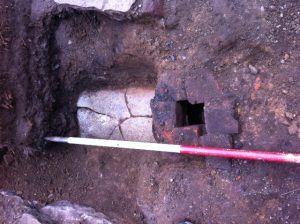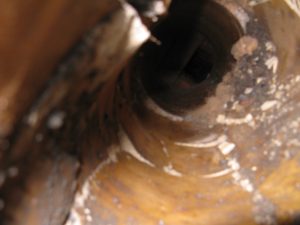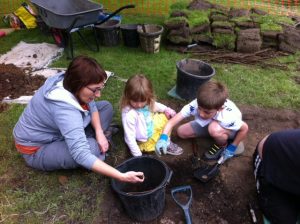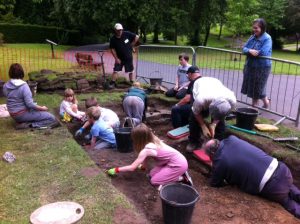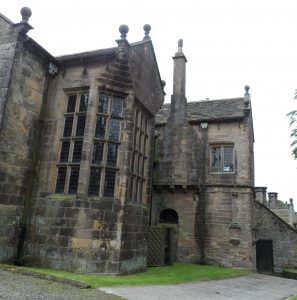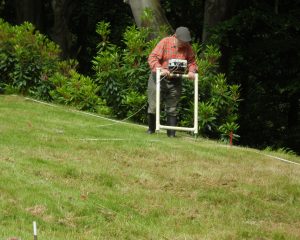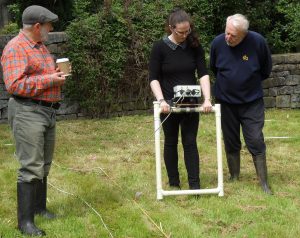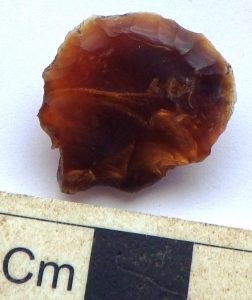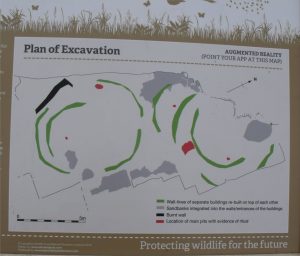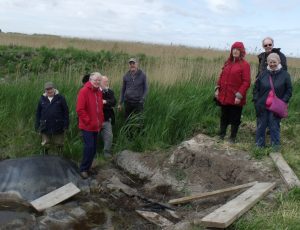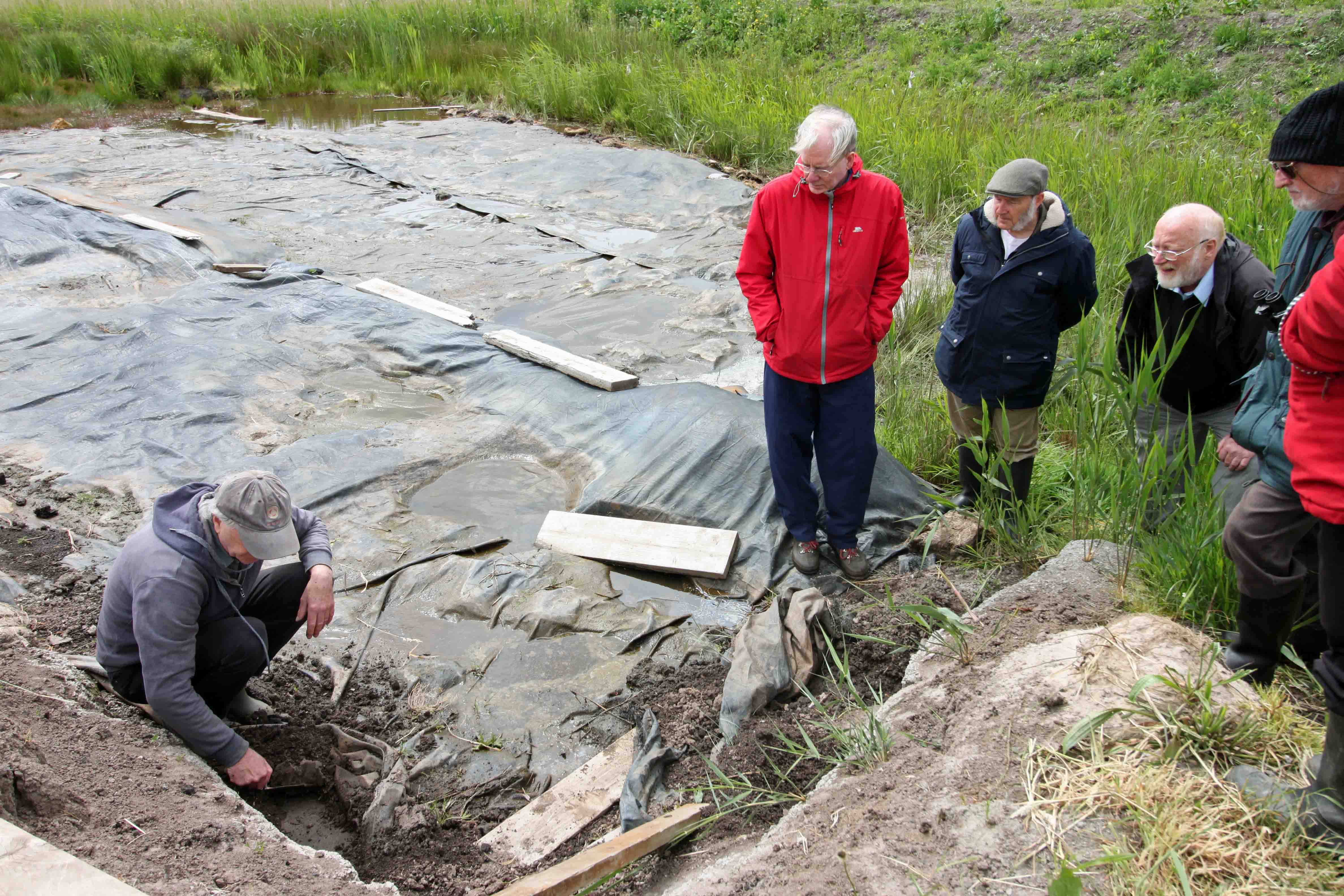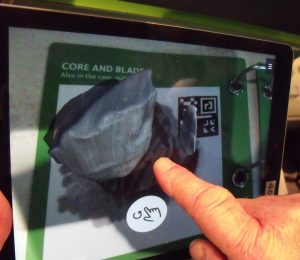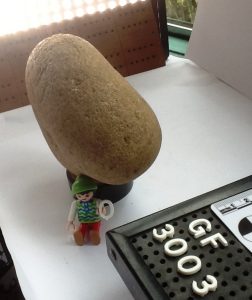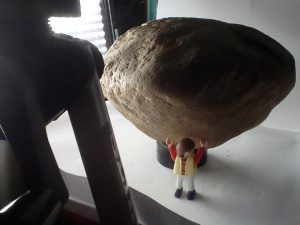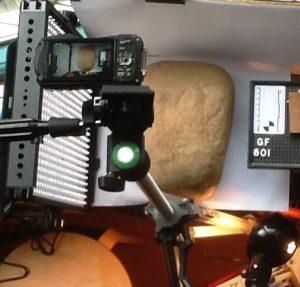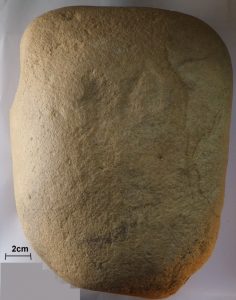We held our very first conference on the work of TAS on 29th February 2020.
The venue was St John’s Church, Dukinfield, or more precisely their excellent Church Centre, a modern, well-equipped building that managed to host at least three other activities at the same time as affording us ample space in a very pleasant environment. Our thanks to the Church for their warm and generous hospitality.
It was heartening to see such a good response to the event, with people coming not only from the world of archaeology, but from local history groups, family history groups and no doubt some who came merely with a sense of curiosity; that and the conviction that our talks would be a better bet than mixing it with Storm Jorge!
On the agenda was a diverse range of talks, including a guided archaeological tour of the church over the lunch period, conducted by our own Chris Jones.
The range of subjects gave everyone a fair idea of the breadth of our work, from churchyard surveys, through historic graffiti collection to digs both “modern” and prehistoric. Delphine Wright, a member of the Church, started us off with a talk about the graveyard survey carried out at St John’s itself. This was of particular interest to those of us who enjoy family and social history. Some of the insights were fascinating.
Ellen McInnes, one of our members but also someone heavily involved with the North West Historic Graffiti Survey, talked about the work of TAS at St Michael and All Angels, Mottram where, as regular readers will know, we have been surveying the graffiti and passing the information on to the NWHGS. We learned that such surveys could not only contribute to wider data collection and a growing understanding of the significance of historic graffiti, but also link with other studies in family, local or broader social history.
Before lunch, Mike Nevell gave us an overview of the Dig Greater Manchester Project, with specific reference to the work undertaken in Cheetham Park, Stalybridge and the involvement of TAS. Since the initial excavation, TAS members have been back on a number of occasions to carry out community digs which have been enjoyed by enthusiasts of all ages.
The afternoon kicked off with Ron Cowell of Liverpool Museums giving us a fascinating presentation on our dig at Iron Tongue, above Stalybridge (well, it’s above a lot of places, really). Ron explained how our work had contributed to a fuller understanding of mesolithic activity, and in particular the relationship between lowland and upland activity in this period.
Next up, Ben Dyson of Archaeological Research Services gave us an insight into the work of a professional archaeologist via his company’s evaluation and excavation of Taylor Bros hatting factory in Denton. Although much of the original site had been obliterated by the Oldham Batteries works, a great deal could still be gleaned. Of much interest were two Lancashire boiler beds, the flue system, a steam engine bed and a well that had been used to supply the boilers with clean water.
The final item on the programme concerned one of our biggest and most important projects – our excavation of a site in the Mottram area that shows evidence of occupation across the mesolithic and early neolithic periods. Kevin Wright of TAS uncovered lots of detail about our dig, the finds and the work that has been done since to provide dates for the site’s use. As ever with such projects, you can end up feeling like there are more questions than answers; but when you started with no answers and didn’t even know that the questions were waiting to be unearthed – much has been achieved.
Thank you to all who contributed – St John’s Church, TAS members, our speakers – but mostly all those who came along and filled the Centre not only physically but with their interest.
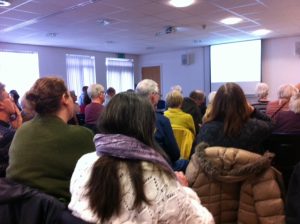
Our guests enjoying one of the talks at the TAS Conference
.

